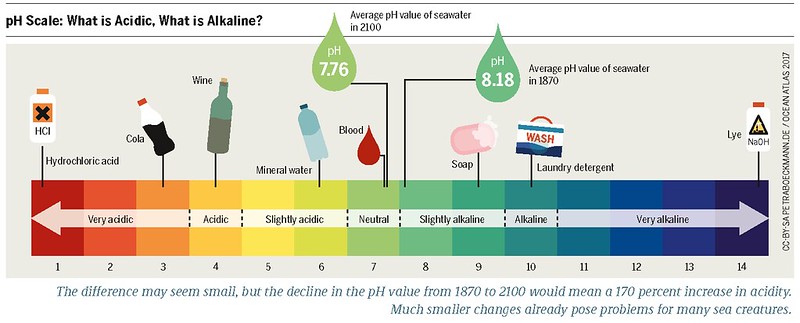The pH of nitric acid (HNO3) in water can range from 1.3 to 3, depending on the concentration of the acid. This acidic nature of HNO3 solutions can have significant implications for various applications and industries. In this comprehensive blog post, we will explore the factors that influence the pH of HNO3 in water, the importance of understanding this property, and the methods used to neutralize and manage the acidity.
Understanding the Dissociation of HNO3 in Water
When HNO3 is dissolved in water, it undergoes a dissociation reaction, where the acid dissociates into hydrogen ions (H+) and nitrate ions (NO3-). This reaction can be represented as follows:
HNO3 + H2O ⇌ H3O+ + NO3-
The presence of these hydrogen ions (H+) in the solution is what gives HNO3 its acidic properties and low pH values. The concentration of these hydrogen ions determines the pH of the solution, with a higher concentration of H+ resulting in a lower pH.
Factors Affecting the pH of HNO3 in Water
The pH of an HNO3 solution in water is primarily influenced by the concentration of the acid. As the concentration of HNO3 increases, the pH of the solution decreases, becoming more acidic. This relationship can be expressed using the following equation:
pH = -log[H+]
Where [H+] represents the concentration of hydrogen ions in the solution.
For example, in a 0.100 M HNO3 solution, the pH is approximately 1.3, while in a more diluted solution, the pH can be closer to 3.
Neutralizing the Acidity of HNO3 in Water
To balance the pH of a solution containing HNO3, a base, such as sodium hydroxide (NaOH), can be added to neutralize the acid. The amount of base required will depend on the concentration of the acid and the desired pH level.
The neutralization reaction between HNO3 and NaOH can be represented as follows:
HNO3 + NaOH → NaNO3 + H2O
By adding the appropriate amount of NaOH, the pH of the solution can be raised to a neutral level (pH 7) or any desired pH value.
Handling and Safety Considerations
It is important to note that HNO3 is a strong acid and can cause severe burns and damage to skin, eyes, and other tissues. When working with HNO3, it is essential to use appropriate personal protective equipment (PPE), such as gloves, safety glasses, and a fume hood, to ensure safe handling and prevent exposure.
Contaminants and Environmental Concerns
When HNO3 is dissolved in water, it can form various contaminants and substances, such as nitrate ions (NO3-), nitrite ions (NO2-), and ammonium ions (NH4+). These substances can be harmful to human health and the environment, and their presence must be addressed.
To deal with these contaminants, various methods can be employed, including:
- Reverse osmosis: This technique uses a semi-permeable membrane to remove dissolved ions and contaminants from the water.
- Ion exchange: This process involves the exchange of ions in the water with other ions, effectively removing the unwanted contaminants.
- Chemical precipitation: This method involves the addition of a chemical reagent to the water, causing the contaminants to precipitate out of the solution.
Applications and Importance of Understanding the pH of HNO3 in Water
The pH of HNO3 in water is crucial in various industries and applications, such as:
- Chemical manufacturing: HNO3 is used in the production of fertilizers, explosives, and other chemicals, where the pH of the solutions must be carefully controlled.
- Environmental remediation: Understanding the pH of HNO3 in water is essential for the treatment and management of contaminated water sources, ensuring the safe disposal or neutralization of the acid.
- Analytical chemistry: The pH of HNO3 solutions is a critical parameter in various analytical techniques, such as titrations and pH measurements.
- Electroplating and metal processing: HNO3 is used in the etching and pickling of metals, where the pH of the solutions must be maintained within specific ranges.
By understanding the pH of HNO3 in water, professionals in these industries can make informed decisions, optimize processes, and ensure the safe and effective use of this important chemical.
Conclusion
The pH of HNO3 in water is a crucial property that must be understood and managed in various applications and industries. By exploring the factors that influence the pH, the methods for neutralization, and the potential contaminants, this blog post has provided a comprehensive overview of the importance of understanding the acidity of HNO3 solutions. Whether you are working in chemical manufacturing, environmental remediation, or analytical chemistry, this knowledge can help you make informed decisions and ensure the safe and effective use of nitric acid in water-based systems.
References:
- Quora – What is the pH range of HNO3? Link
- BYJU’S – What is the pH of Nitric Acid? Link
- Wyzant – What is the pH of a solution that contains 22 moles of nitric acid (HNO3) dissolved in 5000 L of water? Link
- Vedantu – Calculate the pH value of HNO3 solution Link
- Socratic – What is the pH of a 0.01 M solution of the strong acid HNO3 in water? Link
- YouTube – pH of 0.1 M HNO3 Link

